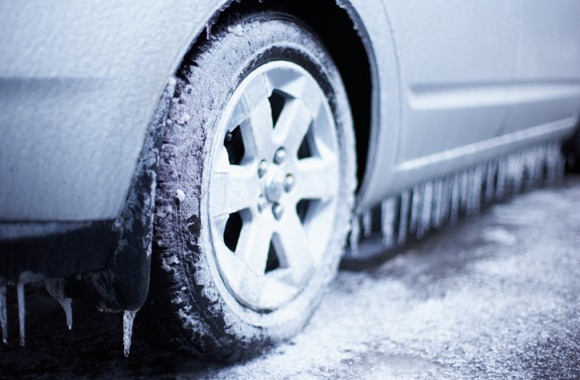
With the winter weather finally upon us it’s time to look over how best to get your cars ready for traveling on the road. So here are some great tips on how to get your car ready for the winter.
- Snow/Storm tires – These tires are a great way for your vehicle to get added traction in adverse driving conditions. Splicing is another way to get some extra grip out of your tires. A winter safety alternative is to use chains or studs on your tires — but be aware that lawful use of these options may vary from state to state, due to the amount of wear and tear they cause to roads.
- Tire pressure – When the temps drop, so does your tire pressure. Check this periodically to optimize tire stability, responsiveness and lifespan.
- Windshield fluid –Use actual wiper fluid to spritz your windshield clean in the winter, if you don’t already. And always keep it topped up so your visibility is in tip-top shape!
- Wiper blades – These puppies will see a lot of action in the cold, snowy months. So while you’re winterizing your car’s windshield fluid supply regularly, also keep an eye on your wiper blades and replace them if necessary.
- Defrosting units –A mega winter safety tip is ensuring your defroster is functioning well, so that you can quickly and effectively clear your windshield and rear window, as well as thaw snow and ice. Seeing as driving in winter is already tough enough, you don’t have to make it tougher by not being able to see clearly.
- Battery – Testing a car’s battery tells you how much juice (charge level) is left to withstand cold temperatures. Also check battery cables and fluid to be sure all elements are in good working order.
- Belts and hoses – Unfortunately, cold temperatures can weaken these engine essentials. While examining these is generally part of routine mechanical inspections (roughly every 30K miles), a particularly important aspect of winter car care.
- Engine coolant – Vehicles need a certain coolant/antifreeze to water ratio in the winter, to protect from overheating in cold temperatures, often 60% to 40%, respectively. Ask an experienced service professional to make sure your combo is up to par as you winterize your car.
- Gas tank –Failing to do keep your gas tank full can cause condensation droplets to drip into the gas, and work their way towards fuel lines. Should these fuel lines freeze, gas won’t be able to flow to the engine.
- Heating system –Can be very dangerous, shivering causes the body to tense up, so reaction times can be much slower than usual. It can also cause distracted driving. So at the top of winter safety tips is to make sure your car can reach a warm tempeture.
- Lock de-icer – No one likes getting locked out of the car. Do yourself a favor: keep the de-icer safely stashed in a purse, backpack, garage — anywhere that’s not the inside of your car.
- Roadside emergency car kit –Pick and choose what will best suit your needs, considering items like: flairs, jumper cables or a portable battery jump starter unit, ice scraper, shovel, gloves, flashlight, blankets, wiper fluid, boots, engine coolant, bungee cord, radio, water, and granola bars. No matter what combination you choose for your emergency car kit you will be glad you put it together if the time ever comes that you need it.
